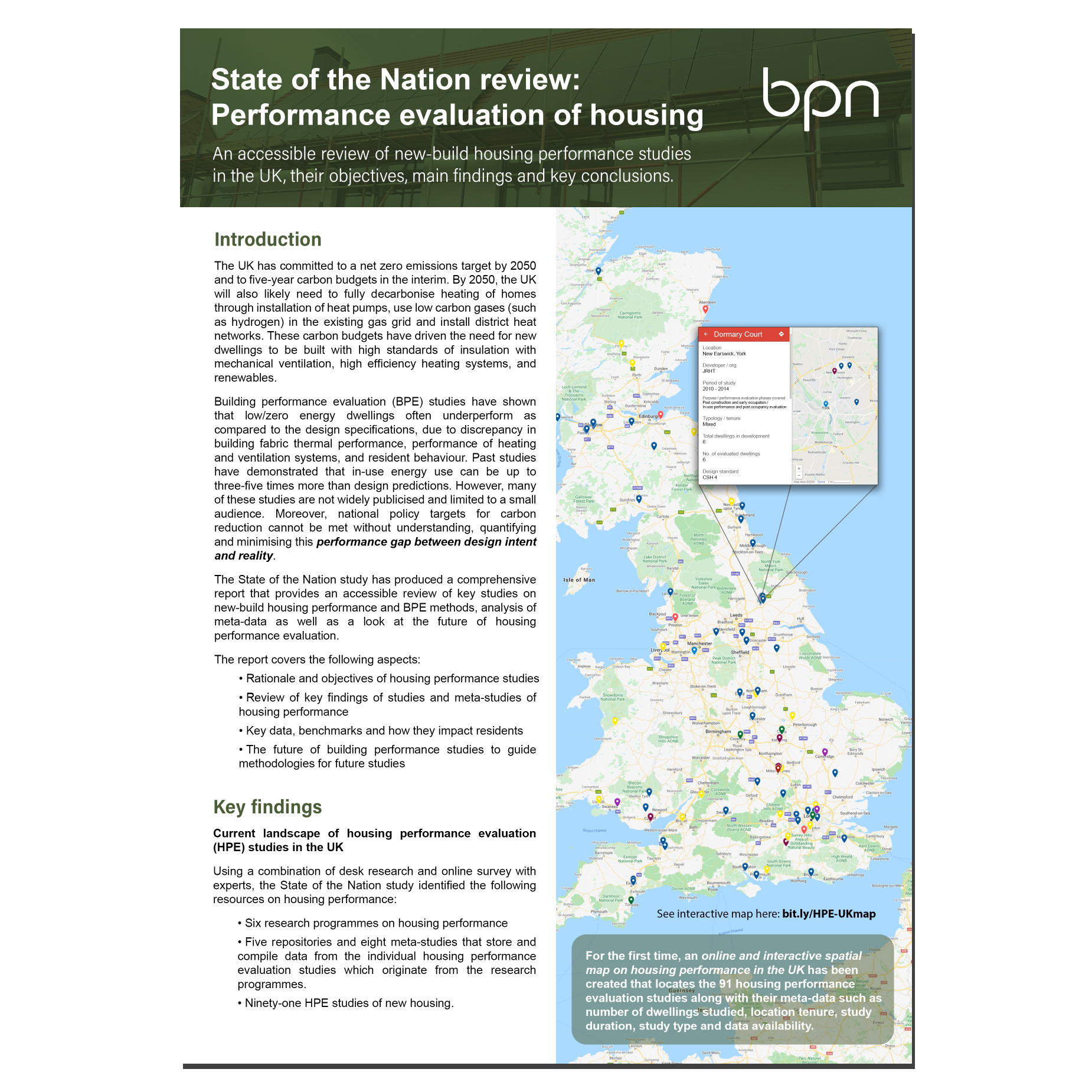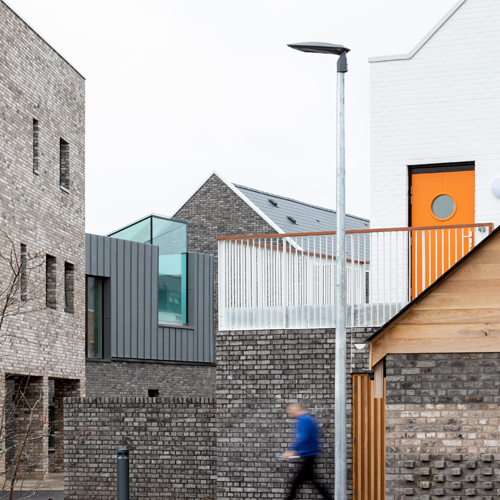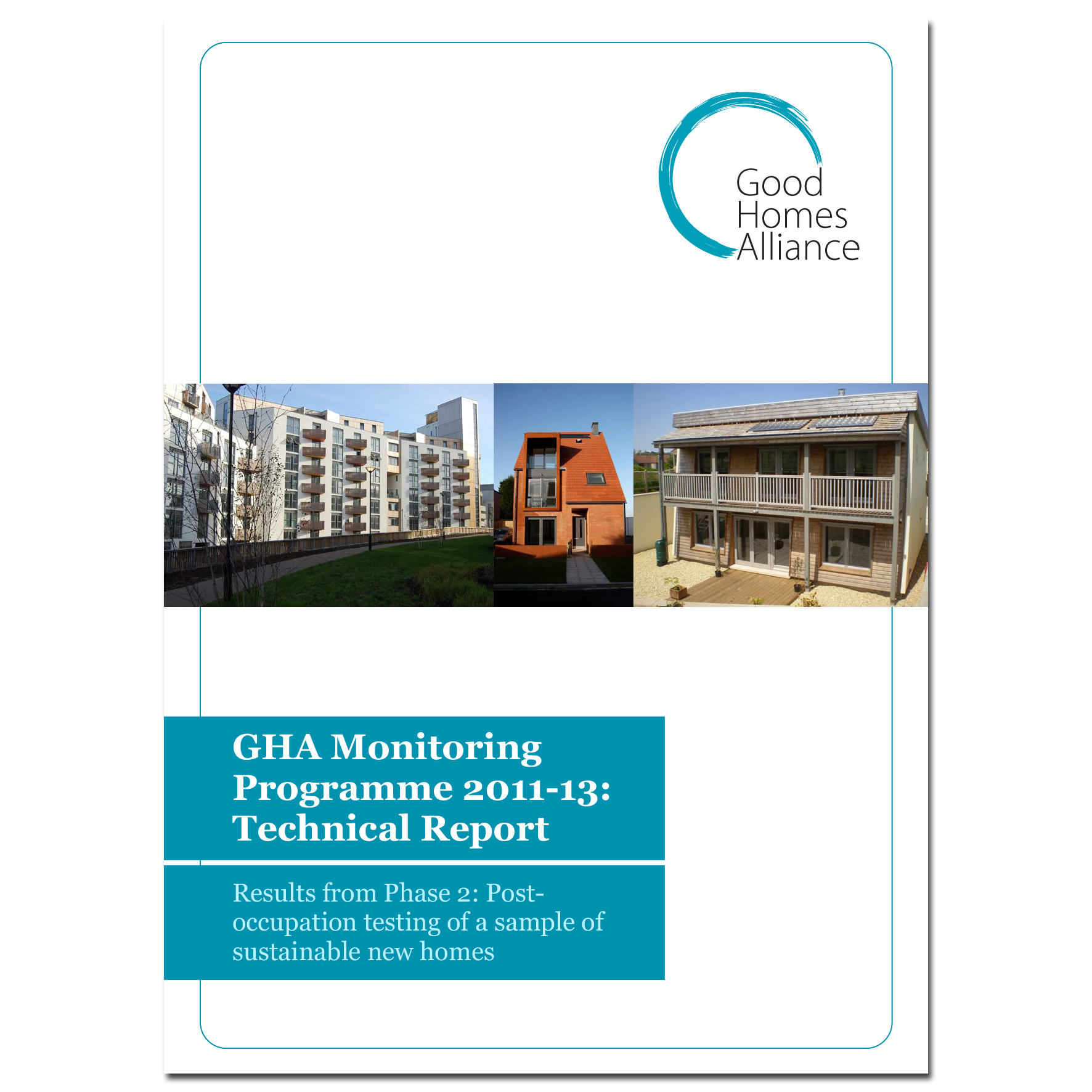-
Quality and In-Use Performance
Advocating for transparent and robust building design and performance approaches to enable healthy and high-quality homes and places
Also see Healthy Homes and Places
We champion higher quality standards and improved building performance in-use. We have worked with leading academics and industry practitioners on a number of important research projects and performance monitoring studies. We have also led campaigns on reducing the performance gap and encouraging local authorities and developers to adopt higher quality housing standards for new homes.
Building Performance Network is now hosted by the Good Homes Alliance
2023 saw the Building Performance Network (BPN) move to become a programme of the Good Homes Alliance. This transition aims to support the BPN’s current activities but importantly will enable the 90+ GHA members and 40+ BPN members to network and collaborate more closely. Through this move we will be able to further promote the benefits of BPE to a greater audience and increase the impact when lobbying for BPE to be included within Government regulations, procurement and funding programmes.
Priorities for BPN 2023-24 programme will include promotion of both BS 40101 and the Resources Hub. Plus continuing advocacy work with Government, The Future Homes Hub and others.
About the BPN
Many existing, new and retro-fitted buildings exhibit large gaps between design aspirations and in-use performance. To meet policy objectives and meet the needs of building owners and occupants, in-use performance needs to improve rapidly and radically.
While many people are now aware of performance gaps for energy use and CO2 emissions, fewer people are aware that issues are also evident in technical performance, occupant satisfaction, operating costs, environmental impact and importantly the health of the occupants.
Data is the key to understanding whether we are making the right choices throughout the lifecycle of the building. The UK suffers from a disjointed building performance evaluation sector, where data are inaccessible, study methods are not clear or shared, and decisions are often made on poor or limited data.
As a direct result of these issues, the BPN was established.
The BPN has the following key objectives:
- Bring people together with an interest in building performance
- Understand how building performance data is collected and analysed to ensure members have reliable data on which to base their decisions
- Move forward the practice of building performance evaluation to make it accurate and usable for the sector
- Share and make members aware of a wide range of studies undertaken in the UK and create a data-sharing platform to move the building performance agenda forward
- Use data to influence change in policy, procurement and practice
The ambition is to focus on how to “do” performance measurement and how to share and access data that would in turn support and help others.
Find out more at https://building-performance.network/.
Initial performance monitoring work
Pioneering studies by Leeds Beckett University from 2005 revealed that there was a significant performance gap – the difference between actual as-built performance and the design target – for energy use in new homes, sometimes more than 100%.
The GHA explored these problems through a number of performance monitoring studies, working with Leeds Beckett University, Oxford Brookes University and UCL, and funded by the Department of Communities and Local Government (DCLG), Energy Saving Trust and NHBC Foundation:
- Phase 1: Fabric testing – Provision of technical support for GHA Developers in monitoring the fabric performance of their dwellings
- Phase 1A covers 4 dwellings on 3 sites, all using different build systems (e.g. SIPS panels or thin joint masonry) and built to different standards, including Code 4, Code 5 and Ecohomes Excellent. Phase 1B has extended this monitoring to cover 4 further dwellings, including Code 4, Code 5 and Passivhaus schemes, and built using timber frame, Hemcrete and other systems.
- Phase 2: In-use monitoring and post occupancy evaluation – Extension of the above monitoring on each site, to measure energy and water consumption, indoor air quality, humidity and thermal comfort, and occupant feedback.
The following projects were used as case studies:
- One Brighton, Bioregional Quintain
- Old Apple Store, Ecos Homes
- Derwenthorpe, Joseph Rowntree Housing Association
Subsequently, numerous other studies have shown that the in-use energy performance gap is a significant problem across the industry, particularly the Zero Carbon Hub reports on closing the gap between designed and built performance and on Understanding the performance challenge, plus the Innovate UK Building Performance Evaluation programme reports.
Other studies have also shown significant performance gaps associated with ventilation, indoor Air Quality and overheating/summer comfort.
Performance delivery – LowCarb4Real
Following the initial monitoring research, the GHA worked with Leeds Beckett University and UCL on the LowCarb4Real project sponsored by UrbanBuzz, to gather evidence and good practice about how to deliver low carbon homes. Drawing on detailed academic studies at Stamford Brook along with GHA member experience, the GHA and its partners helped to implement this learning by providing education and technical support to GHA Developer members and others.
As a result of this work, GHA members were able to improve the performance of their schemes such that they encountered a performance gap of only 5-20%, significantly better than the figures being achieved on other sites elsewhere.
Information about how to achieve good performance on sustainable housing projects was then collected and a number of detailed case studies were created, including:
- One Brighton by BioRegional Quintain
- Bladon, Oxfordshire by Kingerlee Homes
- Old Apple Store by ECOS Homes
The GHA was also involved with a number of performance monitoring studies, as part of the Innovate UK (then Technology Strategy Board) Building Performance Evaluation programme, which showed that the energy use performance gap could be significantly reduced:
Subsequently, a number of organisations (including several GHA members) have developed tools/guidance to address the energy performance gap, including:
- The Assured Performance Process (APP) created by the NEF
- The Building Energy Performance Improvement Toolkit (BEPIT) managed by BioRegional
- Zero Carbon Hub reports
Performance gap campaigns
As a result of this research, the GHA led a campaign for the house-building industry to address the energy in-use performance gap and for housing performance to be based on measured as-built performance, rather than design targets/intent. This challenge was adopted by the Zero Carbon Hub, which developed a working group that discussed how performance measurement could be included in the Building Regulations.
After the Zero Carbon Hub was closed in 2016, there was a hiatus in the industry’s focus on as-built performance until the publication of the new Industrial Strategy in 2017, when the need to radically reduce CO2 emissions was recognised once again.
Subsequently, a number of initiatives have started to address the energy use performance gap, including:
- The Building for 2050 research project, funded by BEIS
- The BEIS Buildings Mission to at least halve the energy use in new buildings by 2030, and the response from the Green Construction Board about how this could be achieved
- The proposed BEIS Future Homes standard, which is currently the subject of an ongoing consultation.
However, there has not been a similar focus on the need to address the ventilation & indoor air quality (VIAQ) and summer comfort (overheating) performance gaps. Indeed, recent Government-funded research on ventilation and overheating has confirmed that these problems are still prevalent. These topics therefore remain a focus for GHA campaigning activities.
Related content

GHA collaborating with Building Performance Network for State of the Nation research
Read More

Five pioneering low carbon housing projects secured for Building for 2050 research
Read More

Vanguard Campaign
Read More

GHA Monitoring Programme – Phase 2 Summary and Recommendations
Read More
